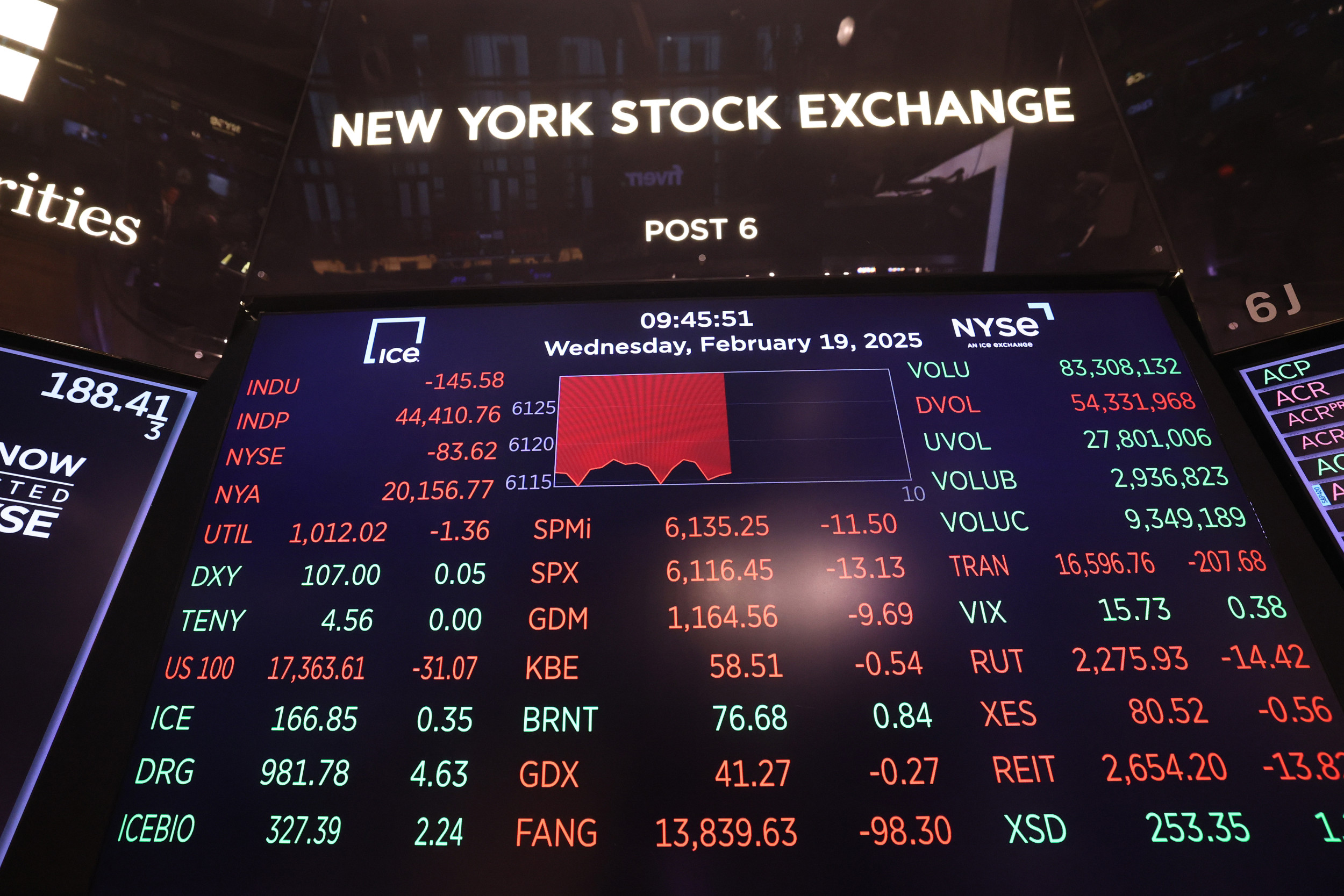American stocks have been trailing behind their European counterparts in the month since President Donald Trump took office, amid uncertainty about the country’s economic future and challenges facing its highest-performing players.
As first reported by the Financial Times, the Stoxx Europe 600—which tracks large, mid and small cap firms on the continent—is up 5.6 percent since Trump’s inauguration. Meanwhile, the Euro Stoxx 50, which is composed of 50 of the highest performing blue-chips in the Eurozone, has gained 6.7 percent since January 17, the last day of trading before the president was sworn in.
Across the pond, the S&P 500 has risen by 2.5 percent over this same period, the Nasdaq Composite by 2.2 percent and the Dow Jones industrial average, an index comprised 30 companies, 2.6 percent.
Why It Matters
Over the past few years, U.S. indexes have outpaced their European equivalents, their dominance owing in part to America’s superior economic growth, as well as the rise and continued strength of its tech sector, which provided an edge over Europe’s more traditional industries. Depending on how long Europe’s boom lasts, this could hint at a shift in the status quo.
Michael M. Santiago/Getty Images
The downturn in the U.S. may also stem from current concerns about how the current administration’s policies could affect American industry.
What To Know
The Financial Times noted that Europe’s strong performance comes following a historic rally for U.S. stocks. The S&P 500, Dow Jones Industrial Average and Nasdaq Composite were all propelled to record highs on the back of Trump’s victory over Kamala Harris in November, and his campaign promises of corporate tax cuts and widespread deregulation.
Wall Street appears to have turned cautious, however, amid fears over the impact of Trump’s trade policies.
Concerns that president Trump’s sweeping tariff plans could backfire and exacerbate the country’s inflationary struggles are already beginning to materialize, and retaliatory measures by key trading partners such as China and Canada promise to put an additional squeeze on U.S. industry.
As highlighted by the Financial Times in its report, the underperforming Nasdaq is an especially “tech-heavy” exchange, hinting at the potential reasons for its muted growth over the past month. The sector was hit by the launch of the Chinese DeepSeek chatbot in late January, which prompted a mass sell-off for companies like Microsoft and chipmaker Nvidia.
The paper also noted that Europe’s recent underperformance was driven by fears of potential tariffs, and when these did not materialize immediately after the inauguration, a rally followed.
What People Are Saying
“For Europe, the trade war bark has so far been worse than the bite,” Andrew Pease, chief investment strategist at Russell Investments told the Financial Times.
Billionaire investor and former hedge fund manager Stanley Druckenmiller told CNBC in late January: “I’ve been doing this for 49 years, and we’re probably going from the most antibusiness administration to the opposite. We do a lot of talking to CEOs and companies on the ground. And I’d say CEOs are somewhere between relieved and giddy. So we’re a believer in animal spirits.”
Daniel Morris, chief market strategist at BNP Paribas Asset Management, recently told CNBC: “I think at least European investors may need to enjoy it while it lasts.”
What Happens Next?
According to the minutes from the Federal Reserve’s January meeting, released on Wednesday, the central bank believes there are a number of factors that could impact the “hinder the disinflation process,” including Trump’s immigration policies.
“Business contacts in a number of Districts had indicated that firms would attempt to pass on to consumers higher input costs arising from potential tariffs,” the minutes also read.
Do you have a story we should be covering? Do you have any questions about this article? Contact LiveNews@newsweek.com.


